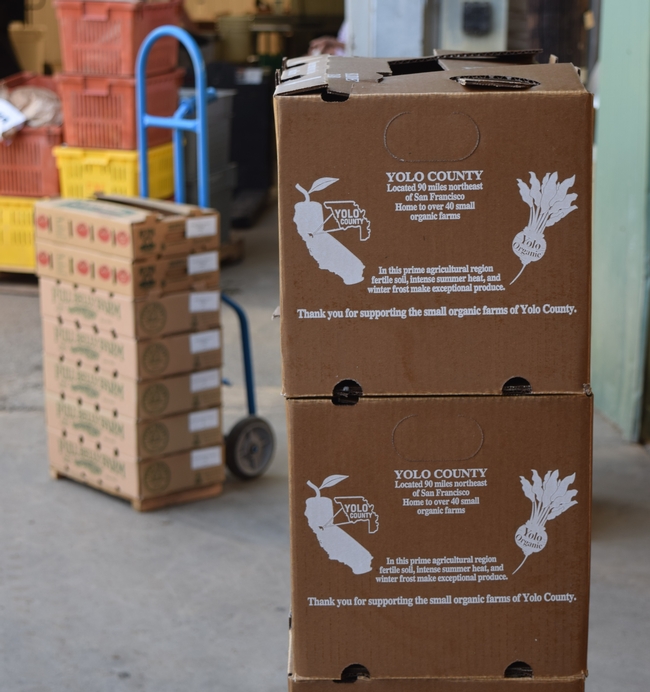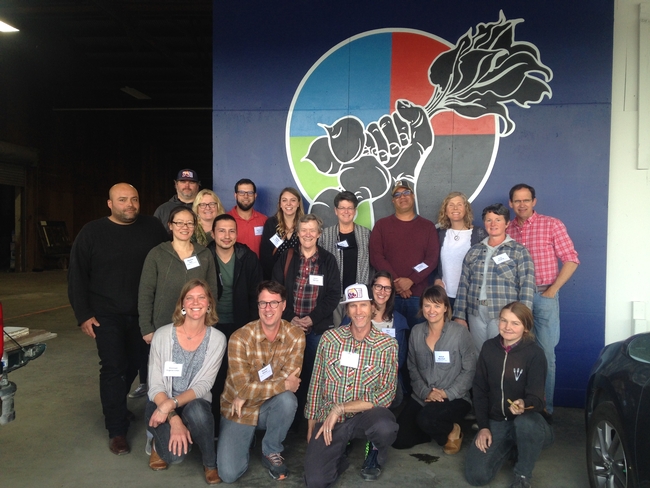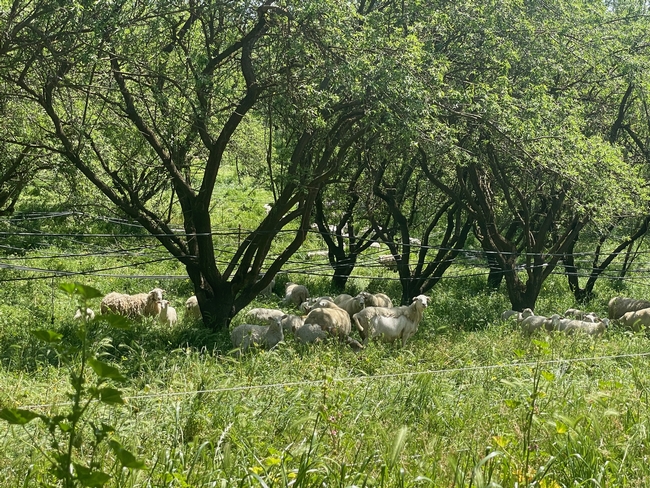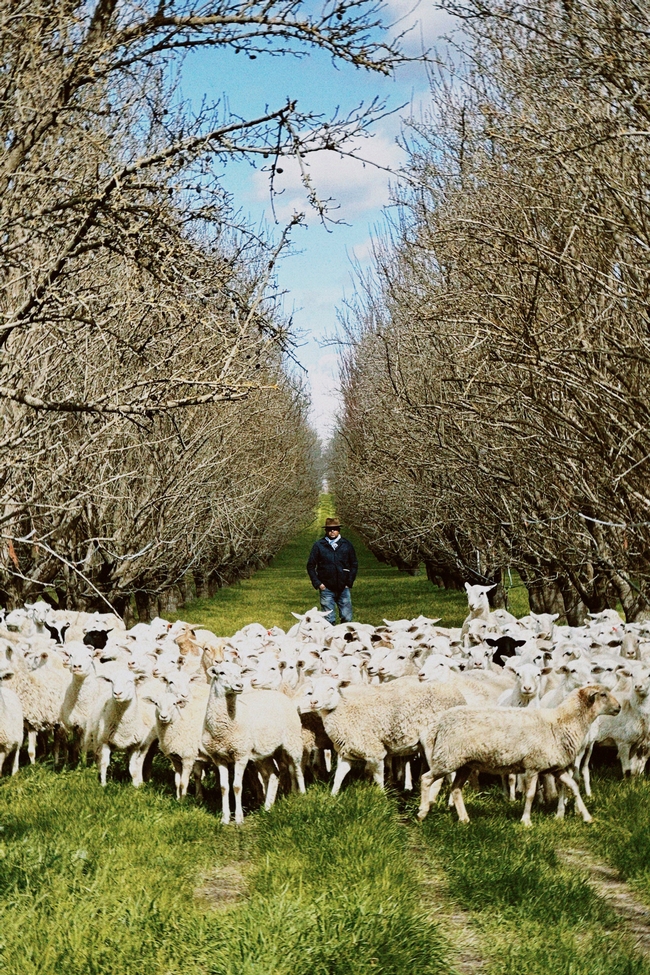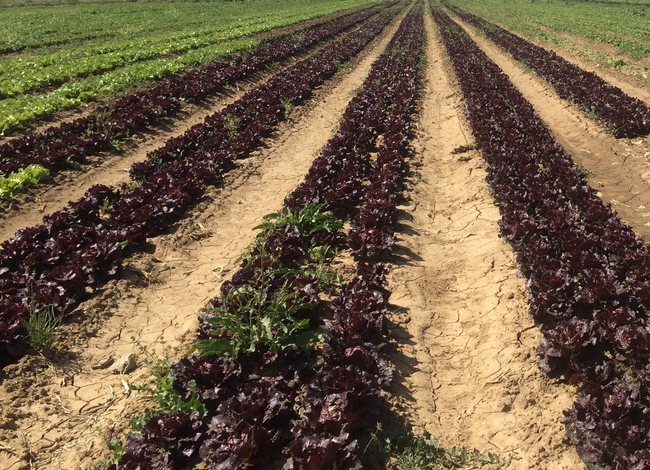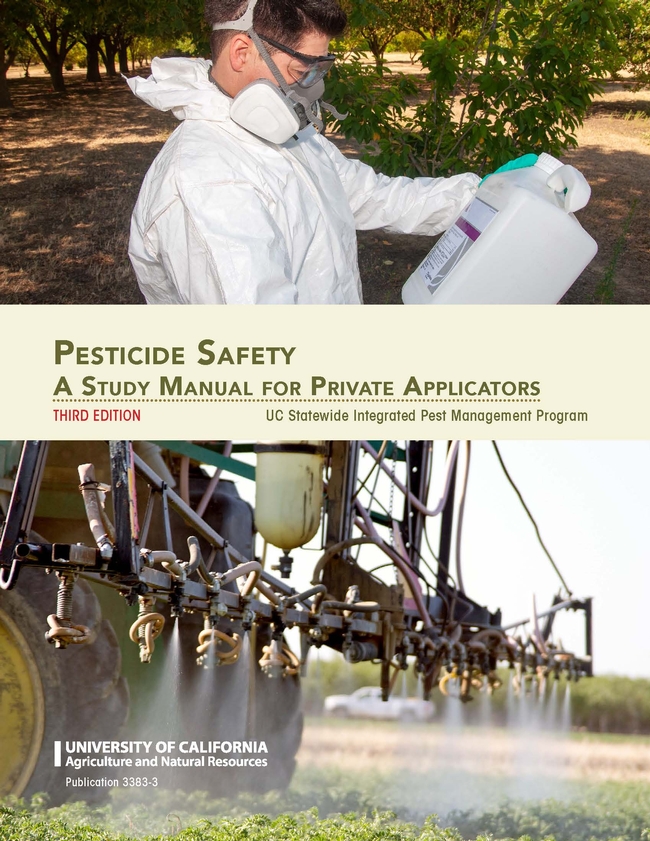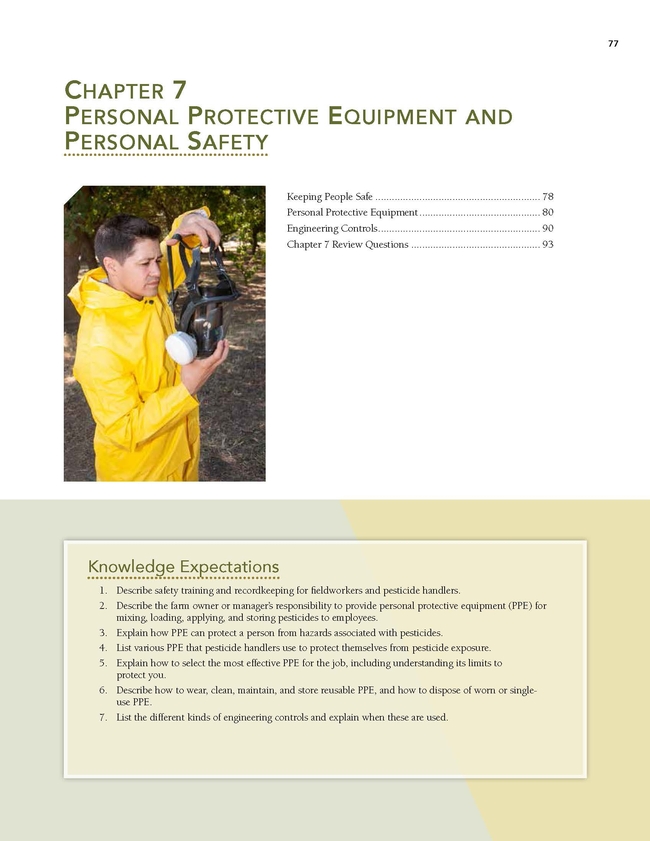Posts Tagged: Safety
Winter season: A time for food safety systems re-evaluation and education for food hubs
The holiday meal season is often a busy time for food hubs – entities that handle the aggregation, distribution and/or marketing of source-identified regional food – as restaurants, retailers and consumers fill their tables and shelves with an abundance of fresh, local products. However, the subsequent winter months can provide a valuable time for reflection and re-evaluation of a food hub's systems and processes. In this spirit, it may be helpful to remind people working at food hubs that University of California Sustainable Agriculture Research and Education Program (UC SAREP) offers a suite of food-safety resources – in English and in Spanish – on its website.
- A step-by-step guide for food hubs on how to pursue a third-party food safety audit with guidance on how to navigate buyers' questions.
- Two sample food-safety plans intended as a starting point to be adapted to a food hub's specific operations and practices.
- Example standard operating procedure, or SOP, documents related to 11 common tasks carried out by food hubs.
“We hope these resources can play a role in helping food hubs to adopt best practices and control risks related to food safety,” says Gwenael Engelskirchen, sustainable food and farming coordinator with UC SAREP, who led the development of these educational tools.
According to the Centers for Disease Control and Prevention, approximately, 1 in 6 Americans (or 48 million people) gets sick and 3,000 die of foodborne diseases annually. In 2011, to help prevent the occurrence of foodborne illness, the federal government enacted the Food Safety Modernization Act (FSMA), designed to outline actions to be taken at various points along the supply chain for both human and animal food.
UC SAREP's Food Safety Resources for Food Hubs are intended to help food hubs navigate these food-safety regulations and accompanying best practices. Resources are also available in Spanish at Recursos de seguridad alimentaria para los centros de distribución de alimentos.
Food safety certification guide
Some buyers verify a supplier's food safety program by requiring an audit performed by a third-party certification body or auditing company. This Guide to Food Safety Certification offers key considerations before deciding to pursue a food safety audit and helps users navigate the food safety certification process.
Food safety plan
Food hubs that meet the criteria for full compliance with FSMA's Preventive Controls for Human Food Rule are required to have a food-safety plan in place. And for all food hubs, having a shared document describing the facility's operations and how potential risks of food contamination are managed is a good idea. Two sample food safety plans, inspired by the operations of food hubs in California, provide a starting point and can be adapted to a hub's own operations.
Standard operating procedures
Standard operating procedures provide detailed step-by-step instructions for how to carry out operational tasks within a food facility. The standard operating procedure samples cover common topics such as handwashing, facility cleaning and more, and are intended to be adapted to a food hub's specific operations and practices.
Jacob Weiss from Spork Food Hub in Davis said, “the templates were a great starting place for us to build the framework of our food safety plan. It helped us figure out what we needed to (and didn't) need to include. I think the SOPs are also really useful because they are broad enough to get you started but flexible enough to add the specific practices of your business or hub.”
For additional information, visit UC SAREP's webpages on Food Safety Resources for Food Hubs or Recursos de seguridad alimentaria para los centros de distribución de alimentos.
These resources and tools were developed in collaboration with various project partners, including Department of Food Science and Technology at UC Davis, Department of Population Health and Reproduction at UC Davis School of Veterinary Medicine, Center for Precision Medicine and Data Science at UC Davis Health, and Community Alliance with Family Farmers.
USDA awards $2 million to study livestock grazing in organic orchards
UC, The Organic Center, University of Rhode Island partner on $3.5m food-safety study for organic produce growers
Grazing sheep and other livestock can help convert cover crops to fertilizer for orchard crops. To develop best management practices, the University of California and The Organic Center are collaborating on research to help organic orchard growers safely incorporate livestock grazing into their farming practices. The project is funded by a $2 million grant recently awarded through the U.S. Department of Agriculture's Organic Agriculture Research and Extension Initiative research program.
Interest in grazing livestock on cover crops in nut orchards has increased in recent years. However, research is needed to determine the best way to improve soil health and pest suppression, and to address concerns about food-borne pathogens and food safety.
“Organic farmers typically follow the USDA National Organic Program standards for raw animal manure, waiting 90 to 120 days between incorporating raw manure into the soil and harvesting the crop,” said Alda Pires, UC Cooperative Extension urban agriculture and food safety specialist in the School of Veterinary Medicine at UC Davis.
“Little research has been conducted to verify adequate waiting periods to reduce contamination risks in integrated crop-livestock production systems,” she said. “This research will fill the knowledge gap and facilitate the development of science-based food safety guidelines for grazing small ruminants in orchards.”
For this four-year project, “Influence of Orchard Grazing on Soil Health and Pest Control While Mitigating Food Safety Risk,” the scientists will study organic almond, walnut and pistachio orchards in two distinct nut-growing regions in California – the Sacramento Valley and San Joaquin Valley. The scientists will assess the effects of livestock grazing of cover crops on bacteria populations, soil health, pest control and economics.
Building soil health
“Growers have consistently raised the need for more information on grazing impacts on nutrient availability during tree growth, as well as potential to build up the biological, physical and chemical pillars of soil health,” said Amelie Gaudin, associate professor and endowed chair of agroecology in the UC Davis Department of Plant Sciences.
Livestock grazing may provide an opportunity to quickly enhance the amount of nitrogen that can be used by plants and microbes when the cover crop is terminated. “This project will help growers develop nitrogen budgets for these more diversified systems and quantify additional benefits and potential tradeoffs for soil health – such as compaction and salinity – to guide the development of place-based best management practices,” Gaudin said.
Pest management
Houston Wilson, UC Cooperative Extension specialist in the Department of Entomology at UC Riverside, will be studying the effects of livestock grazing on orchard pests.
“Navel orangeworm, or NOW, is by far the most destructive pest of almonds and pistachios,” Wilson said. “These moths overwinter in unharvested nuts in the orchard, and so removal and destruction of remnant nuts over the winter is the foundation of NOW control. While farmers typically use machinery to do this, grazing with animals may present a unique alternative that is more cost-effective and provides additional ecosystem benefits, such as soil health and weed control.”
Outreach to farmers
As part of the project, The Organic Center was awarded $75,000 to work with UC Agriculture and Natural Resources to direct national extension and education outreach activities. These will include a social media campaign, webinars and educational sessions and a technical report for growers.
“There is an increasing interest from organic farmers to learn how to incorporate livestock into their operations to gain better soil health and fertility,” said Amber Sciligo, director of science programs at The Organic Center.
“This research is very exciting because it will holistically explore the potential risks and benefits of livestock not just to soil health, but also pest control – a truly interdisciplinary project that matches the whole system of the organic farm.”
Produce food-safety management tools
For another organic food-safety project, Pires and Sciligo will be working with Patrick Baur, professor of Sustainable Agriculture and Food Systems at the University of Rhode Island.
The University of Rhode Island and The Organic Center received $3.5 million from USDA's Organic Agriculture Research and Extension Initiative research program for the new organic food-safety education project.
“We're going to develop a new food safety management tool designed specifically for organic soil amendments,” said Baur, who is leading the project. “We're also going to develop a suite of new communication and training tools aimed at the entire fruit and vegetable sector to build a shared language between organic agriculture and the food safety community and help them work better together.”
As part of the produce project, Pires of UC Davis was awarded $1.16 million to conduct a risk assessment and create a publicly accessible dashboard to meet the specific needs of organic growers operating at different scales, under different cropping systems, in different regions.
Also participating in this project will be Beatriz Martinez Lopez, professor in the School of Veterinary Medicine at UC Davis, and Abhinav Mishra and Govindaraj Dev Kumar of the University of Georgia.
How can we navigate changes in the home insurance market?
A wildfire shockwave recently hit California. Maybe you missed it. While there were no large wildfires threatening homes, and the air wasn't thick with smoke like in the Northeast from the wildfires in Canada, a shockwave did hit.
State Farm, California's largest home insurance company, issued an emergency declaration. As I write this, I note that my homeowner's policy is with State Farm, and while this may not affect me today, it could affect me when I choose to sell my home or buy a new one.
State Farm announced they will stop issuing new home insurance policies. Allstate issued a similar policy last year. These actions, in essence, shrink the available pool of insurers in California and are a very troubling sign for all of us. Furthermore, this action may significantly lengthen the time it takes to sell or buy a home in California or may affect our long-term ability to sell in the future and capture the financial values we have in our properties.
The loss of over 43,000 structures to wildfire over the last 10 years has not gone unnoticed by the insurance industry. Increasing fire hazards and skyrocketing costs to rebuild has everyone on notice that business-as-usual is not working.
California's policymakers and the Insurance Commissioner have their hands full with structuring the insurance market, creating a market that manages risk and attracts a diversified pool of insurance carriers, stabilizing insurance availability and affordability, and supporting the real estate sector of California's economy.
As a member of the state's Risk Modeling Workgroup, I can tell you that many approaches are being debated to address our challenges, including 1) allowing reinsurance calculations to be a part of insurance rates, 2) finding other ways to fund the Fair Plan (California's insurance plan of last resort), and 3) allowing catastrophe models to forecast risk in order to better anticipate future losses. With the passage of Proposition 103 in 1988, rate setting has been driven by past claims experience. Most suggest that future losses are likely to be significantly worse than past losses.
On July 13, the California Insurance Commissioner will hold a public hearing on whether rates should utilize catastrophe models that can account for anticipated climate changes and risk mitigation actions taken by property owners. Further, the state's Risk Modeling Workgroup will issue a report on this topic later this summer.
While these approaches are nuanced and complicated to understand, there are many actions that property owners can take to protect the value of their properties and mitigate risks.
Given this period of insurance instability, the best action property owners can take is to understand and mitigate wildfire risks. Reducing fuels, improving defensible space, and hardening the exterior of their structures to heat, flame and ember exposures will help to entice insurance companies to underwrite your property, enhance the ability to sell the property, and improve the odds of the building surviving future wildfires. By marketing the value of these actions, just like the remodeled kitchen or other property upgrades that attract homebuyers, you can market your asset to future insurance companies and buyers. Proactive actions, like upgrading vents, are a key part of the solution.
AB 38 (2019) started this process by mandating that the seller of a property disclose to the future buyer defensible space actions that have occurred for properties in Very High and High Fire Hazard Severity Zones. In 2025, these disclosures need to include home hardening actions based on an established low-cost retrofit list. Over time, these actions are likely going to become key for the negotiation of price and potentially the closure of the sale.
Independent assessment of preventive actions may also be helpful. The Safer From Wildfires program was established in 2023 to help promote insurance discounts for the voluntary adoption of wildfire mitigation actions; in my opinion, it could be used as an insurability assessment as well. Another option is to consider the Insurance Institute for Business and Home Safety's Wildfire Prepared Home designation. Helping your community think through the issues and take collective action to meet a Firewise designation is another approach to consider.
More information about home hardening and defensible space can be found at UC Cooperative Extension's Fire website. And if you need help navigating a recent insurance cancellation, United Policyholders, a consumer rights advocacy organization, has helpful resources.
Wildfire adaptation will not occur overnight, but I believe we have a pathway and clear evidence to demonstrate that these types of specific actions will help all of us live successfully with wildfire in California now and into the future.
Hotel refrigerators vary in temperature
For food safety, storing leftovers at 33 F to 40 F is ideal
A few years ago, I was in Reno overnight for work and wanted to save my delicious dinner leftovers for breakfast. But when I opened the mini refrigerator in my room, my first reaction was, "That feels too warm!" I did not save the leftovers and made alternative plans for breakfast. Since then, I've wondered how common an unsafe hotel refrigerator might be.
The pandemic delayed my research as travel was out of the question for a while. This year, I had the opportunity to test my question when I traveled up the coast from California to Washington and back home again on vacation. I stayed in a variety of places, perfect for my casual research project. My trusty refrigerator thermometer came with me. The results: mixed!
Of the five hotels I stayed in:
- One in-room refrigerator was too warm to store food safely overnight.
- Two were too cold. One was so cold, it froze the beverage I placed inside. Not optimal, but better than food poisoning!
- Two tested perfectly in the safe zone for food storage.
The score: One out of five refrigerators in my unscientific study was unsafe. One in five is not great odds.
The Ideal Refrigerator Temperature
A temperature range of 33 F to 40 F is ideal. Refrigeration in this range slows the growth of microorganisms, including bacteria. Safe food-handling practices advise that food should be held for no more than two hours above 40 F. Keeping food overnight above that temperature could have serious consequences, meaning storing food in hotel refrigerators that are not 40o F or below for more than two hours can have serious consequences.
Stay Safe When You Travel
Here are three ideas to help you avoid problems when you travel:
1) Measure. Take a refrigerator thermometer with you if you plan to use the in-room mini refrigerator. There's nothing like data to let you know the refrigerator is at the right temperature. Refrigerator thermometers are readily available at grocery and hardware stores, and online.
2) Avoid. Consider not storing anything that might spoil in your hotel refrigerator if you do not know the temperature setting. Cooling sealed canned beverages would be fine. At worst, your beverage will not be as cool as you hoped, but because it's sealed, nothing will spoil.
3) Take a quality cooler. Since I was driving, I took my cooler, one that holds appropriate temperatures for days. Traveling with a ready supply of ice, beverages and confidence that my groceries were held safely below 40 F was lovely. This solution is not for every trip, and of course, you need to replenish the ice as you go.
As you plan your future travel, I wish you a safe journey and a skeptical mindset on the safety of your hotel refrigerator for food storage.
Do you have any questions about safe food storage? You can find your local UC Master Food Preserver program or submit questions at http://mfp.ucanr.edu. You can also sign up to be notified of upcoming online food preservation classes.
More detail, key updates in new edition of pesticide safety manual
Publication in English, Spanish prepares private applicators for state exam
Expanded from four chapters in the previous edition to 12, the third edition of Pesticide Safety: A Study Manual for Private Applicators aims to be more than just a study guide.
The manual, available for purchase in English and Spanish, provides much more detail on essential processes and procedures that will help keep applicators safe while using pesticides – as well as reduce environmental impacts from misapplication.
Published by University of California Agriculture and Natural Resources in collaboration with the state's Department of Pesticide Regulation, the manual – intended for members of the agricultural community who own, manage or work on farms that use restricted-use pesticides – also includes substantial updates.
“The information in the book they were using was way out of date,” said writer/editor Shannah Whithaus, senior editor for pesticide safety education with UC ANR's Statewide Integrated Pest Management Program. “Also, the book was much, much shorter than it needed to be, because it wasn't providing enough information for people to safely apply pesticides, given the complexity of the regulatory environment we're in now.”
The new manual reflects important changes to federal and state regulations since the publication of the previous edition in 2006.
“There are significant regulatory updates which help you stay up-to-date with safety rules and standards – and protect your workers from overexposure to pesticides,” said Lisa Blecker, technical editor of the publication, and currently a pesticide safety educator at Colorado State University.
In addition to emphasizing the broader ecological ramifications of improper pesticide use, the manual includes information on subjects that might get short shrift in other manuals, such as the correct calibration of equipment to ensure accuracy of application.
“All of that is now in the book and fully fleshed out,” Whithaus said. “[Applicators] are going to be able to do that much more effectively using the new book, compared to the old one – it was really hard to be thorough in 80-some pages.”
The new edition – totaling more than 200 substantive pages – also features a more streamlined and user-friendly layout modeled after a sister publication, The Safe and Effective Use of Pesticides, written for commercial applicators.
“A significant update is a layout that is not only beautiful, but helps you identify key information you need to know in order to make safe and effective pesticide applications,” Blecker explained.
She highlighted the “knowledge expectations” listed at the beginning of each chapter and in the margins of the book, next to the relevant passages. The statements serve as “visual cues” to help readers learn and retain the material they need to pass California DPR's certification exam for private applicators.
And while the manual functions as an improved study aid for owners, managers and workers who apply pesticides, it doubles as a reference that they can turn to for years to come.
“It's going to be able to serve as a reference manual, as opposed to just a study guide,” Whithaus said. “You really will be able to use this book as a tool to help you do better in managing your land.”
The manual, listed at $29, is available for purchase in English at https://anrcatalog.ucanr.edu/Details.aspx?itemNo=3383 and in Spanish at https://anrcatalog.ucanr.edu/Details.aspx?itemNo=3394.

